A Superteam Perfect on Paper. But Will It Work?

Jonquel Jones, a new member of the Liberty, was finishing her workout at the team’s practice facility at Barclays Center in late January when she saw assistant GM Ohemaa Nyanin’s eyes go wide. Courtney Vandersloot had announced over Twitter and Instagram that she’d be joining Jones and Breanna Stewart, the team’s other marquee offseason acquisition, in New York.
“I just started screaming and going crazy in the gym,” Jones says. “Just going super, super crazy and just being super excited about everything.”
The creation of a superteam in Brooklyn did not happen by chance. The Liberty had planned carefully for months, if not years, a vision scribbled on whiteboards in the back offices of Barclays Center by general manager Jonathan Kolb and coach Sandy Brondello. The players had been no less careful in their planning, conspiring for months in a group text to find a way to play together and hashing over the implications in intimate family conversations in Seattle, the Chicago suburbs and Connecticut. Even still, dozens of small moments had to tip the right way for them to all wind up together.
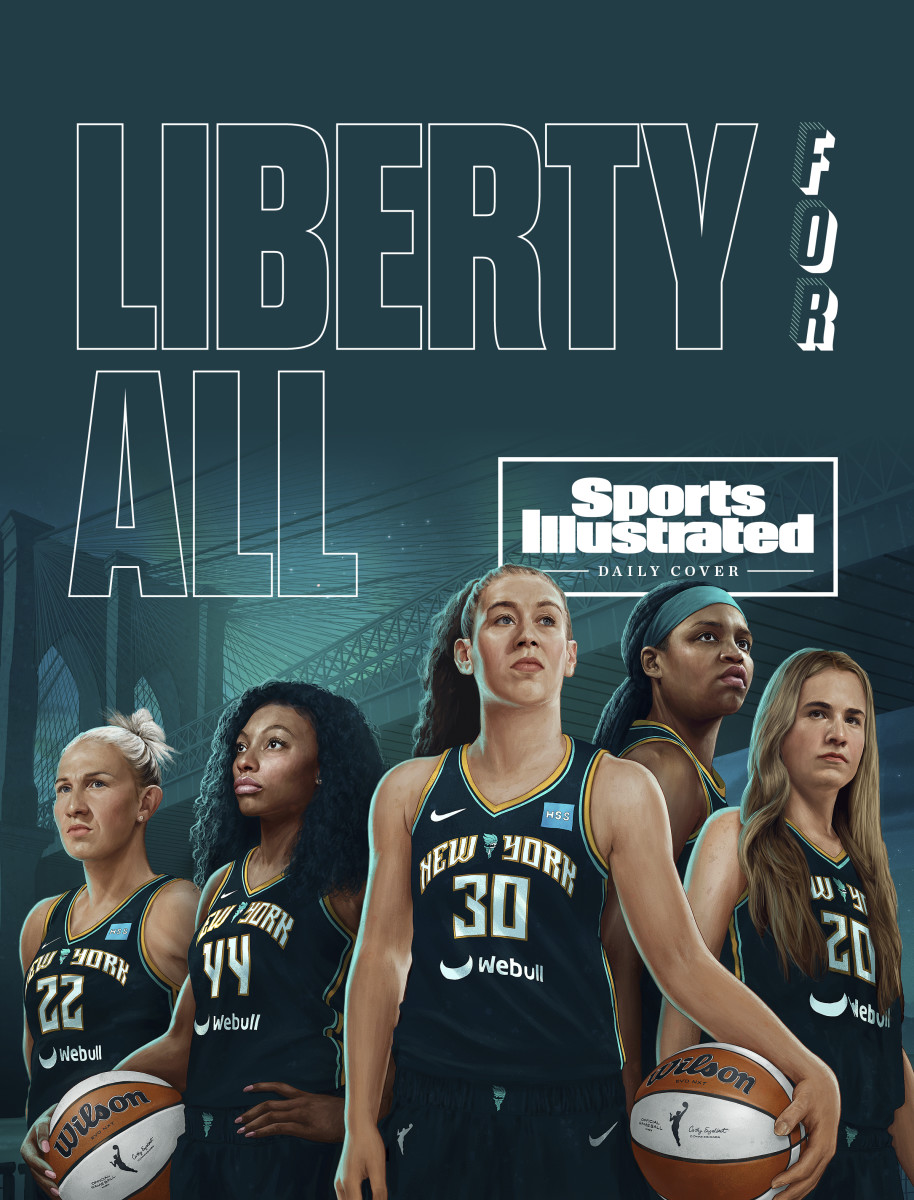
The end result: Three of the top 10 players in the WNBA in win shares since 2016 are now on the same roster, one that made the playoffs last season without any of them. The biggest stars on that team—’20 No. 1 pick Sabrina Ionescu and All-Star guard Betnijah Laney—are still there, too, alongside an impressive collection of young talent designed to help New York maximize its new core for years to come.
Now, the Liberty loom as the greatest collection of talent ever assembled on a WNBA team, with a legitimate chance to bring a pro basketball title home to New York for the first time since the Knicks in 1973.
And the league, just a few years after wondering whether it would have a team in New York at all, has a jewel in its largest media market as it prepares to negotiate its next television contract.
The fit seems perfect on paper. But will it work? If it does, then the trio of stars will have achieved something more than just a championship: a paradigm shift in the WNBA itself.
That’s saying a lot for a team that, back in 2017, then owner Jim Dolan essentially left by the side of the road. He announced he intended to sell the Liberty, immediately moving them from Madison Square Garden to the Westchester County Center, a high school arena in White Plains, throwing the future of the franchise into doubt.
The purchase of the team in January 2019 by Joe and Clara Wu Tsai offered a pathway to relevance. The Tsais also owned not only the Nets, but, critically, Barclays Center, meaning that the Liberty would have a first-class place to play. That wouldn’t happen in ’20, though, thanks to COVID-19. The Liberty went to Florida for the season and finished 2–20.
“I often think about that time,” Kolb says of that Wubble year. “I don’t think people necessarily understand how difficult that really was on the day-to-day. You’re living in a hotel, with your competitors that you’re losing to daily.”
It was a true bottoming-out for a proud, original WNBA franchise. New York’s Wubble experience was made even worse by an injury to Ionescu, its freshly drafted new franchise cornerstone. She sustained a severe ankle injury that ended her season after three games. Stewart, the 2020 WNBA Finals MVP, would end up leading her Storm team to a title.
More of the same followed back home in Brooklyn in 2021—the Liberty’s 12–20 year included a late-season swoon, a brief playoff appearance and further evidence that while Ionescu was a legitimate star, the team needed bigger building blocks to reach its championship aspirations. The Liberty’s coach, Walt Hopkins, was outfoxed in a one-game playoff by the Mercury’s signal-caller, Brondello, who took Phoenix all the way to the WNBA Finals. There, however, Brondello’s team was bested by Vandersloot and the Sky, who had upset the ’21 MVP Jones’s Sun in the WNBA semifinals.
Fifteen months later, all four—Brondello, Jones, Vandersloot and Stewart—would be wearing seafoam.
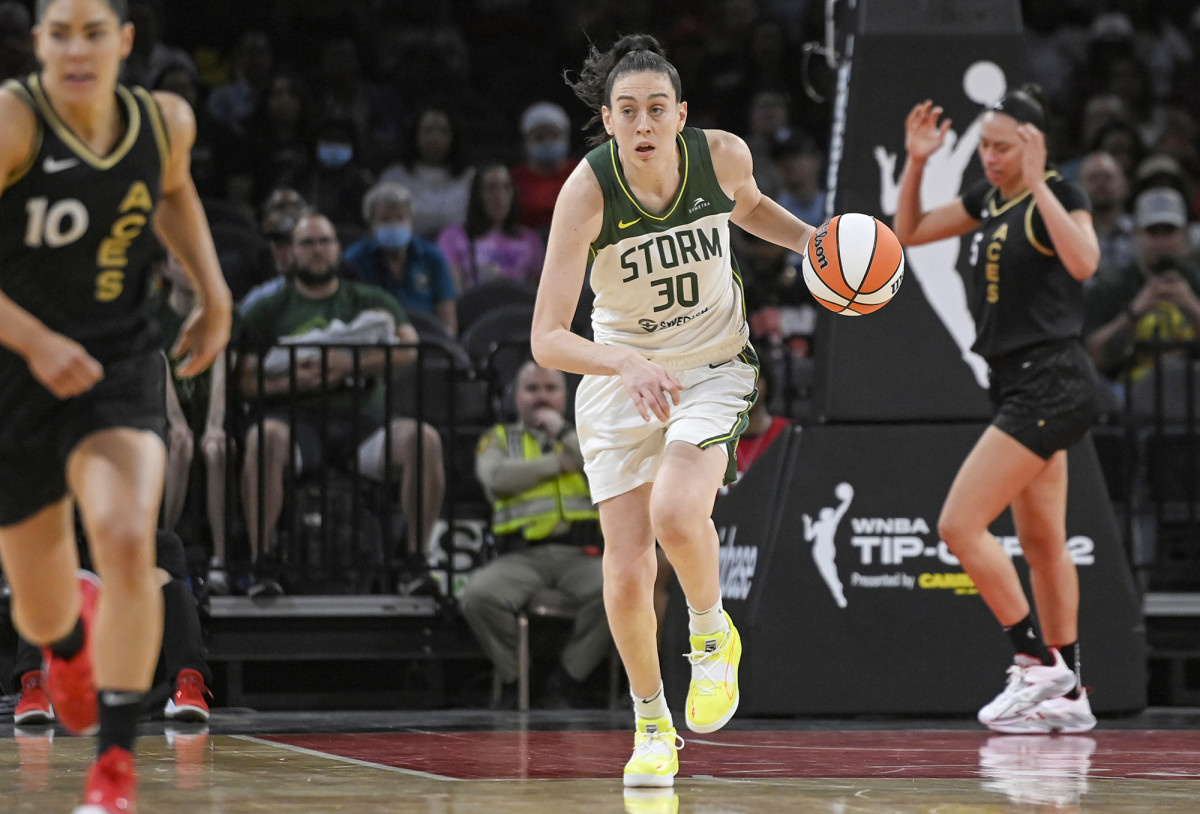
For New York the good fortune of bringing in Brondello is hard to overstate. The Liberty moved on from Hopkins after two underwhelming seasons just as the Mercury were moving on from the longtime Australian national team coach, who’d led Phoenix to the playoffs in each of her eight seasons at the helm, winning the 2014 WNBA title. Brondello, who favored a more balanced offensive attack than Hopkins, quickly earned the respect of her players, nudging her squad to a 16–20 record last season.
If Brondello was right for the 2022 Liberty, she is ideal for the ’23 Liberty. “You always want to coach the best players,” she says. “And these are the very best. I’ve got to pinch myself. Phoenix, I had a great eight years and I’m very grateful for that. And now I get an opportunity to coach in New York. . . . And obviously, Breanna Stewart.”
Brondello brought with her a strong track record of forging relationships, most notably how she helped fuse Brittney Griner and Diana Taurasi into a championship duo. But she also had experience with the trio of stars New York was looking to attract. Brondello hadn’t just coached Vandersloot; she’d coached her wife and Sky teammate, Allie Quigley, overseas. She’d coached Stewart’s wife, Marta Xargay, as well.
Even before this offseason, the foundations for the moves were there. Then the Storm elected not to core Stewart (a process that locks her rights with her current team, similar to the NFL’s franchise tag) ahead of 2022 free agency, leaving her free to meet with other teams. And so she did—with Kolb, Brondello and Wu Tsai, who flew to Seattle to sell her on the future of the franchise. The Storm, however, still owned the present: Legendary point guard Sue Bird, who’d collaborated with Stewart on titles in ’18 and ’20, planned to play one last season.
“I wasn’t ready to leave Seattle then,” Stewart says. “There were things that I wanted to do still and obviously go out with Sue and appreciate the opportunity to play with her on the court.”
But the meeting started a conversation between Stewart and Xargay about what an eventual move might look like. So many of the answers revolved around Stewart’s East Coast roots, from childhood in North Syracuse to college at UConn (where she won four NCAA titles and four Most Outstanding Player of the Final Four awards in four seasons). She even
still had enduring friendships with her AAU team, the Philly Belles.
“O.K., what if we do this?” Stewart recalls asking Xargay. “What if we stay? What if we go? And ultimately, I mean, I’m in the best position possible, because there really was no wrong answer. But I’m excited about being home in New York. I’m excited about being closer to my grandparents. I’m excited about all the relationships that I’ve built from when I was born until when I left when I got drafted, are all going to come back and mean so much more.
“Two years ago, I wasn’t even thinking about this possibly happening. And then once I started thinking about, Oh, maybe I’m gonna go back to New York? Then it was like, I couldn’t see anything else but that.”
Similarly, Vandersloot’s free agency after the 2021 season was a test run for what would become her post-’22 migration east. “That’s when we started to explore it, but ultimately we decided we wanted to try and run it back with Chicago,” she says of her conversation with Quigley, who is sitting out this year. “But then after the season, when we were starting to talk about it again, it was kind of like—we’re familiar. We’re open to [moving].”
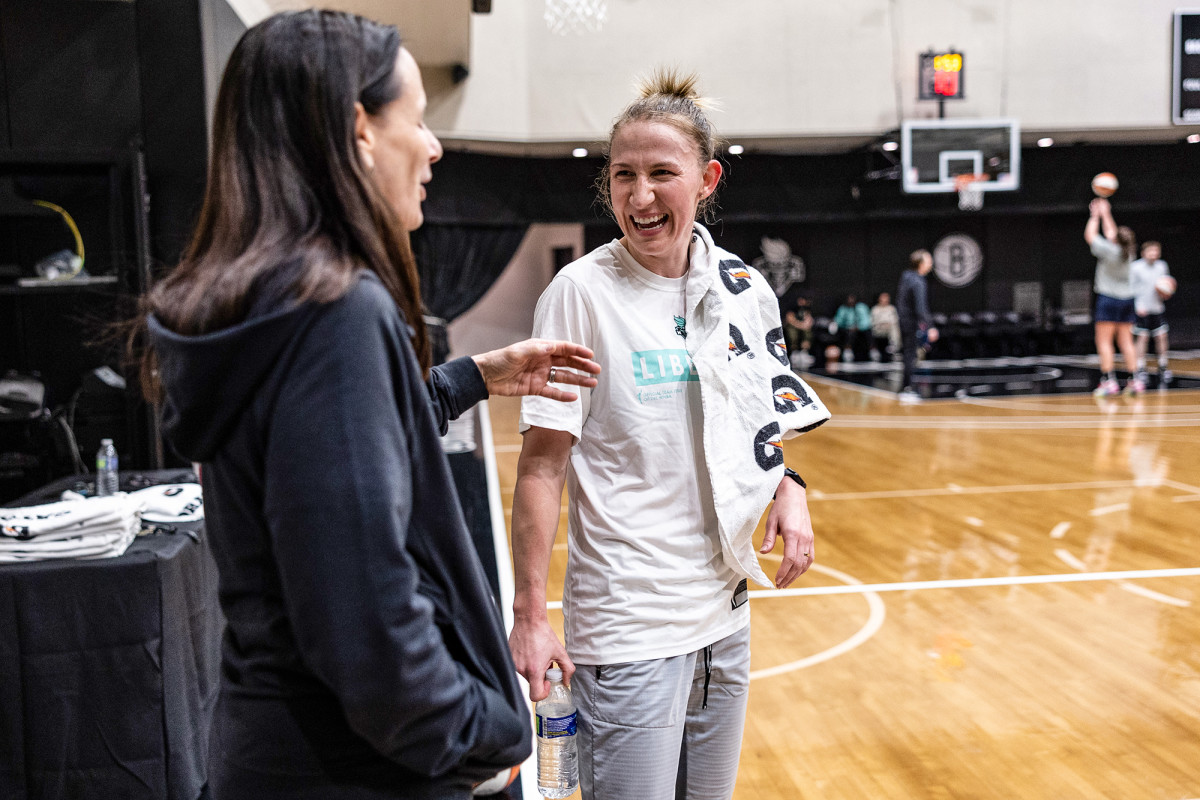
Meanwhile, Jones was rapidly approaching the end of her tenure in Connecticut. Unlike Stewart, who’d been anointed from Day 1 in Seattle as the franchise player, Jones had to prove herself again and again. The sixth pick in the 2016 draft, in which Stewart went first, she faced doubts about her ability to dominate despite her 6' 6" frame and shooting and rebounding. (A former GM said at the time that she simply couldn’t be that good, coming from non–Power 5 George Washington.)
During her six-year tenure in Connecticut, the Sun were typically plagued with an overcrowded frontcourt and a lack of perimeter shooting. And yet: With Jones as an instant star, from impact rookie to All-Star in her second campaign, Connecticut won—and won big. In 2019, Jones and the Sun led in the third quarter of the decisive Game 5 of the WNBA Finals, only to fall short against a Mystics team featuring Elena Delle Donne and the most efficient offense in league history. In ’21, it was Vandersloot’s Sky that upset them after the Sun finished with the league’s best record at 26–6. In ’22, Jones almost carried the Sun to a title once more, before Connecticut fell in four games to the Aces, a team absolutely stacked with perimeter shooting to create space for A’ja Wilson. It was the proof Jones needed that to win a title, she’d need a different supporting cast.
“Before the [2022] season started, I had conversations with the higher-ups of the franchise in Connecticut and told them that I wanted to give it one last go and one last push,” Jones says. “I wanted to see what the team really looked like, full strength.”
Jones inked a two-year deal to stay in Connecticut, but says she had an understanding with the team that their relationship could end after one season. “We signed up for those two years, but, you know, if I decided that I wanted to move on, or I decided that I wanted to go somewhere else, that it would be respected.”
WNBA free agency is still in its infancy. Only since the collective bargaining agreement signed in 2020 has there been the type of player movement that, like in the NBA, can turn a league into a yearlong drama. Before that, a trio of players this accomplished, this young, simply would have been cored into their 30s, leaving them with the choice of either demanding a trade (costing the team receiving them assets in return) or playing out their contracts.
The WNBA’s newly fluid player market meant something else, too: a new era of player empowerment.
All three stars had some enormous decisions to make—and they all understood that nothing was guaranteed. But they also left as little as possible to chance. A group text had started among them a year earlier, around the time they started to think about what life might look like away from their current franchises. It was over this thread they orchestrated their flight to Brooklyn, not unlike Kyrie Irving and Kevin Durant a few years before. From the start, Jones, Stewart and Vandersloot were determined to play as a trio.
“Speaking with them and then making my decision, knowing that they still had to go through their whole process, I feel like that gave me the extra oomph—the feeling of satisfaction,” Jones said of knowing her decision came from a collaborative conversation.
This was critical, all three players say.
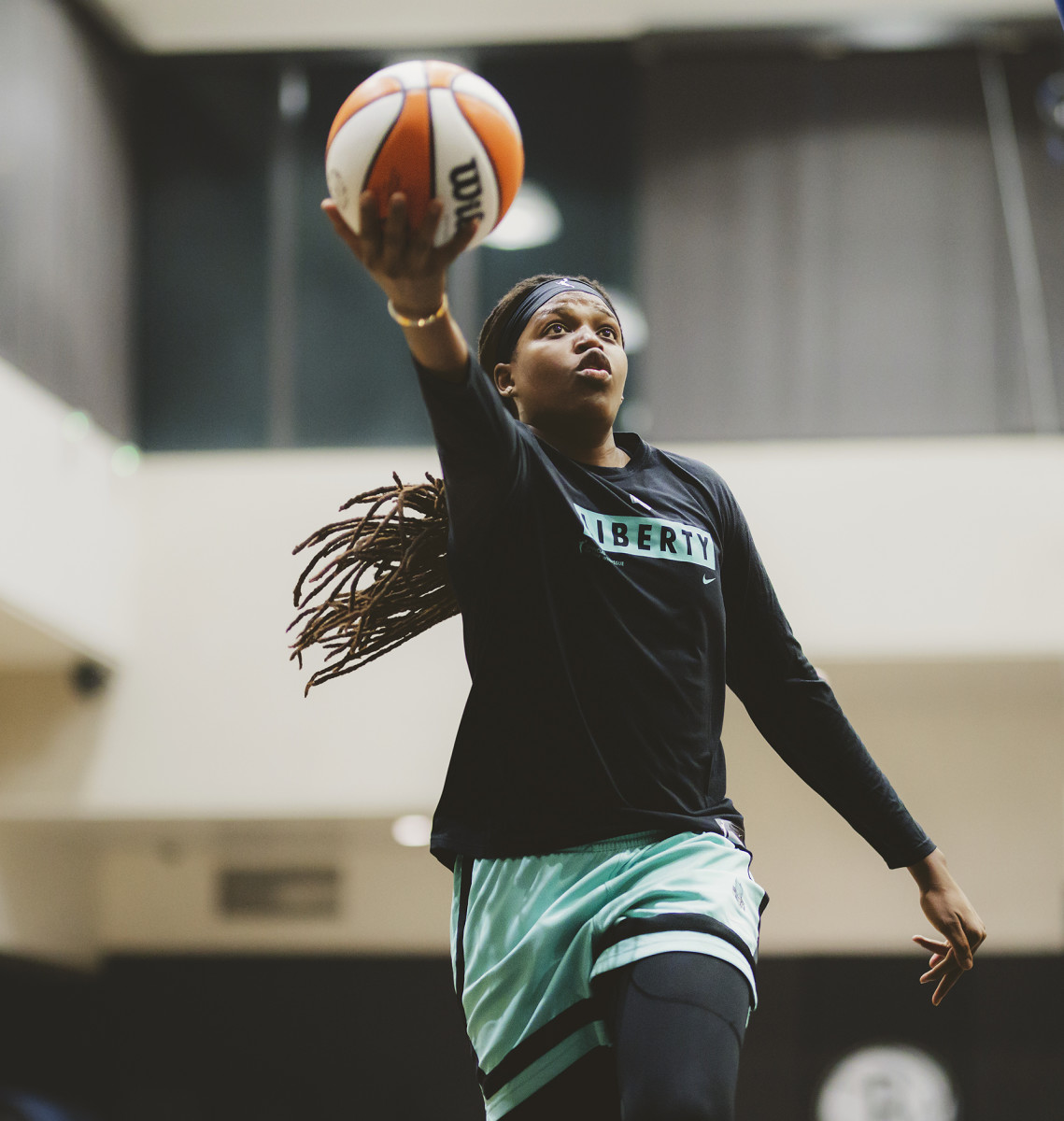
The 2022 Liberty struggled to a 1–7 start, the ill effects of a ragged training camp that saw too many players either injured or still overseas. Every time Brondello walked into Kolb’s office, though, she’d see the three names on his whiteboard he’d been targeting since the previous offseason’s free agency: STEWART. JONES. VANDERSLOOT. Stewart and Vandersloot would be free agents, obviously, but there were already leaguewide rumblings that Jones might want out of Connecticut. Brondello said the whiteboard helped elevate her spirits as she worked with her group, finishing strong—going 15–13 after that horrid start—good enough to reach the playoffs and take the Sky to a decisive Game 3 in the first round.
“We had a tough run,” Brondello says. “I had no players in training camp. And I had a young team trying to learn a new system with a new coach that takes time. I was just preaching patience, patience. We’re going to be O.K. We’ve just got to get healthy. By the end, I think we played really good basketball, but in our evaluation for us to get to that next level, we needed to bring some top-tier players in. Then, the wish list, it just all fell into place.”
As the winter courting commenced, Jones assumed a leadership role among the three for a practical reason: She needed to go first, before Stewart and Vandersloot had made any guarantees. If she was to approve a trade from Connecticut, it would happen ahead of the free-agency signing period.
“At the end of the day, I was going to do what was best for me and the organization that I was going to, and so if I really wanted to play with them, I felt like I had to just make sure I was completely honest about everything that was going on,” Jones says. “Make sure they felt like they could trust me in the decisions that I was making.”
Jones met with several teams with the Sun’s permission, but quickly determined that the place for her was New York. The front office didn’t promise Jones unlimited touches nor top billing. The selling point was about the talent she’d have around her: Ionescu, Laney and hopefully even more. A Brondello system. A chance to be, as she put it, “fulfilled with the level of basketball I’m playing.”
She was still waiting for official word from her agent, Boris Lelchitski, when the terms of the proposed deal were reported Jan. 15: Jones and Kayla Thornton to New York in a three-way deal with the Sun and Wings.
The Liberty would give up forward Natasha Howard in the trade, point guard Crystal Dangerfield and wing Rebecca Allen. All three were important parts on the court. But none had made close to the impact that Jones could. And dealing that particular trio saved New York a net of $44,000, critical salary cap room for the negotiations to follow with Stewart and Vandersloot.
This time, when New York came calling—to Turkey, where Stewart was playing overseas—the moment was right. She took meetings with the Lynx, Mystics and Storm, as well, but it was an easy call. Jones says she made a point of not trying to sell her on New York. Even as the trio had been planning together, they each felt they deserved to make the final decision on their own.
“I couldn’t ask anybody else to rush that or give me any guarantees, because I just felt like that would be detrimental to everything, if they came to the team and weren’t happy,” Jones says. “But I knew what the possibility was. We all did.”
That possibility came to fruition a little less than a week later, a few hours before Stewart made it public. First she FaceTimed Kolb, Nyanin and Brondello with the news. It was a late night overseas for Brondello, but she picked up, of course. Kolb did so with apprehension—he liked his chances, he said, but you never know for sure until you hear the words.
“It was a real special moment for the people that are on that journey, to come together and, you know, have a moment to celebrate before the world knew,” Kolb says.
Jones found out, naturally, on the group chat, with Stewart texting three Statue of Liberty emoji, followed by: LFG.
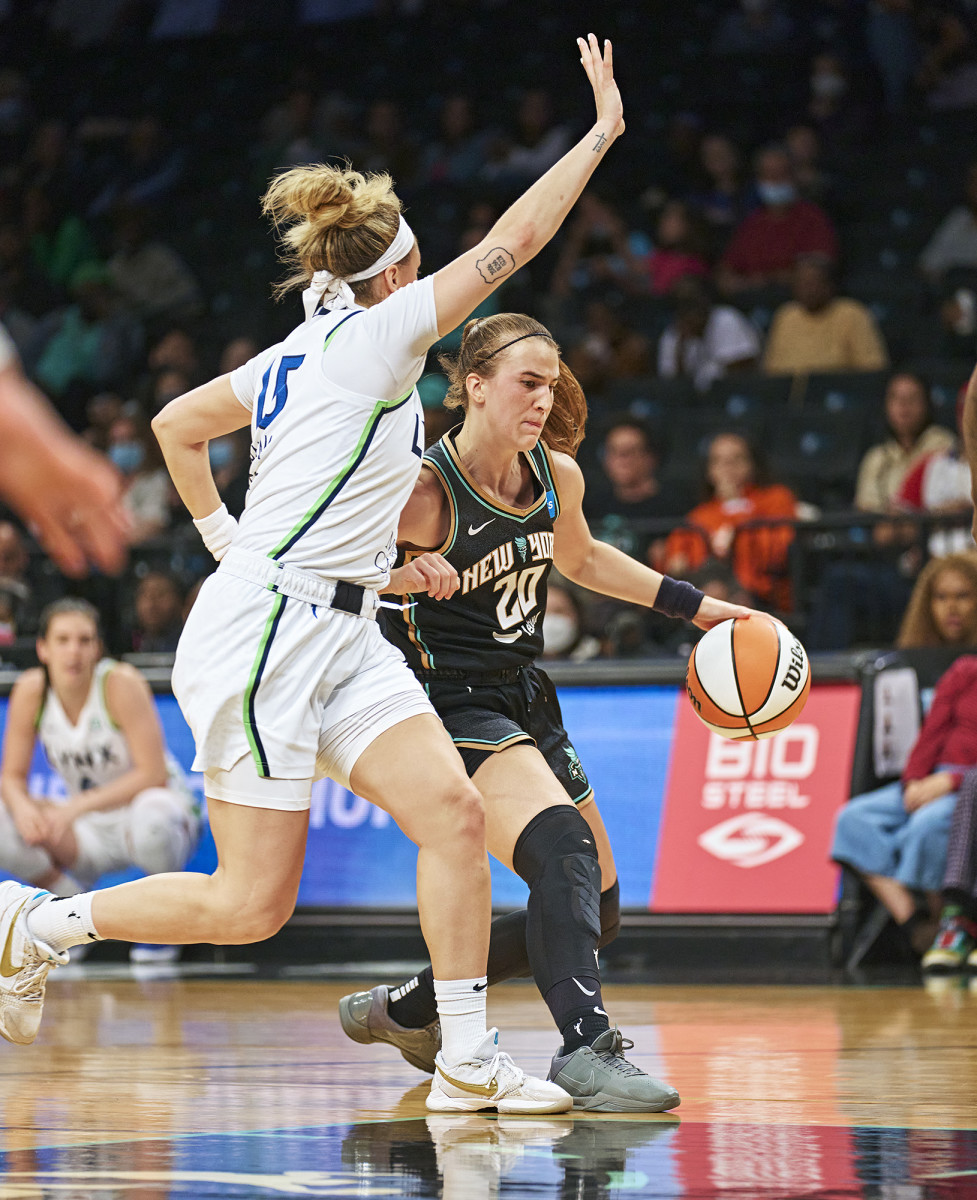
When New York finally made the numbers work with Lindsay Kagawa Colas, the agent for both Stewart and Vandersloot—with both players taking discounts—it meant the Liberty could ink them outright without having to sign-and-trade. This was huge: They’d avoid losing any other assets in the assembly of this superteam.
What that looks like on the court, Brondello still doesn’t know. But she has choices that no WNBA coach has ever faced. Vandersloot, the league’s all-time leader in assist percentage at 37.4%, can run the team at point guard. Ionescu’s assists clip in three seasons is 36.3%, which makes her second all time. But the Liberty were consistently excellent with Ionescu off the ball last season, a skill dating back to her Oregon Ducks years.
Those numbers came with strong supporting casts, but not as strong as this year’s squad. Stewart’s and Jones’s shot charts are seas of red—they are dangerous everywhere on the floor. There is no defensive strategy to force them to one side, and it is impossible to double-team both. And now Brondello has two of the best point guards in the league to feed them.
As for who will join them on this journey? If Brondello goes small, she can play Stewart and Jones at the four and five, using Vandersloot, Ionescu and Laney at one through three. If she prefers a big starting lineup, she can bring Laney off the bench, play Stewart at the three, Jones at the four and deploy one of her centers: Stef Dolson, a multitime All-Star capable of shooting the three (38.2% since 2019), rebounding and defending, or 23-year-old Han Xu, a 6'10" budding star who shot 44.4% from deep in ’22 while dramatically improving her efficiency around the rim.
And then there’s defender extraordinaire Thornton, sharpshooter Marine Johannes and veteran scorer Epiphanny Prince. A pair of ultra-promising young bigs, Nyara Sabally and Sika Koné, may struggle to make the rotation. DiDi Richards, a perimeter defensive stalwart who has proved she can help a WNBA club, may not even make the team.
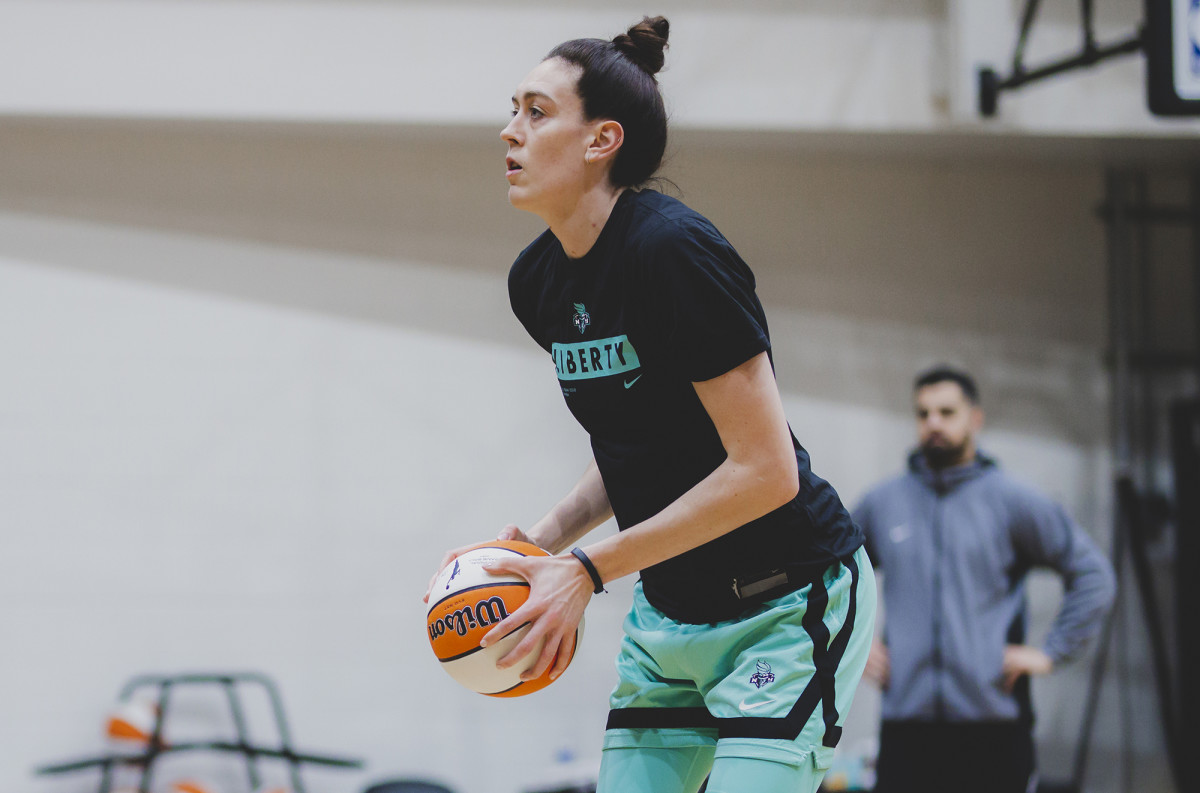
This is not a team built just to win now. The idea is for the players to build lives in New York—not just Jones and Stewart, who are mid-career, but Vandersloot, the eldest at 34,
whose production has yet to decline. She says she is invigorated and could easily see herself playing until she’s 40. A roster like this has a way of energizing everyone. She and Quigley plan to make New York another one of their home bases. Jones plans to settle in the city. Stewart and Xargay are starting to look at school options for their daughter, Ruby, who turns 2 in August.
But right in Barclays, the basketball world saw how quickly grand ambitions can fall apart—with the Tsais’ other team. Kolb, Brondello and the players are taking nothing for granted.
“It took a herculean effort, a collective effort for that to come to fruition,” Kolb says. “You almost don’t believe it when you get that word. But then you go right to the next thing. How do we continue to make this team great? It’s fantastic that we have this roster that’s coming together, but we have a lot of work to do. Great, this looks awesome on paper, but let’s make it work on the court.”
Or as Stewart, who has focused not only on growing her own game but also the entire footprint of the WNBA since the day she was drafted, puts it: “It’s just knowing that I have an opportunity where I can help touch as many lives as possible on and off the court, and show this next generation what they can do when they get to this level.” That level might not be one the league has ever seen before.
